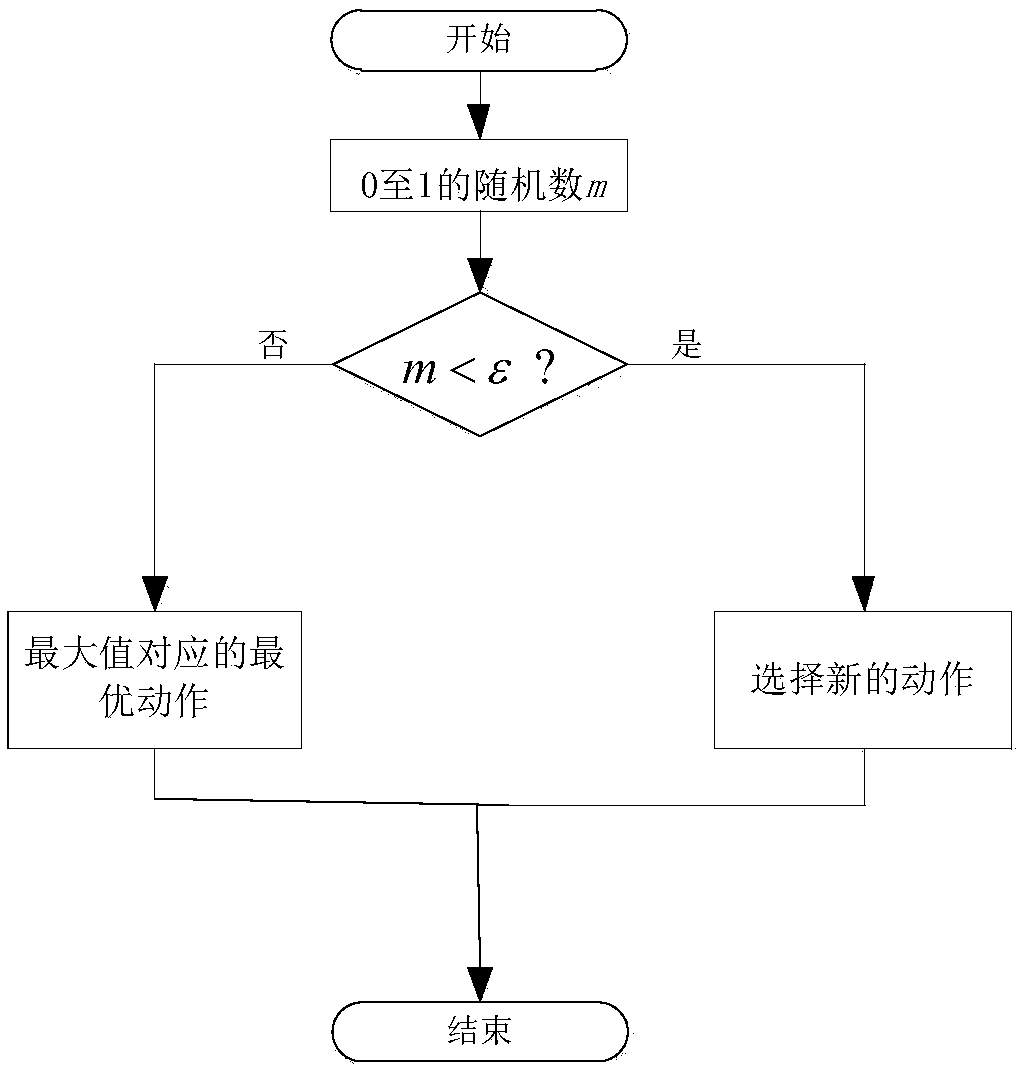Wireless network distributed autonomous resource allocation method based on stateless Q learning
A wireless network and resource allocation technology, applied in the field of wireless network distributed autonomous resource allocation based on stateless Q-learning, can solve the problems of reducing network performance and difficult to obtain effectively, and achieve the best throughput effect
- Summary
- Abstract
- Description
- Claims
- Application Information
AI Technical Summary
Problems solved by technology
Method used
Image
Examples
Embodiment 1
[0041] A distributed autonomous resource allocation method for a wireless network based on stateless Q-learning, comprising the following implementation steps:
[0042] Step (1): Set initial time t=0, Q value function Q(a k )=0, each node k is allocated 2 and 0 (dBm) respectively, and the number of channels and transmission power constitute the action set {a k}. Set the initial value of ε to 0.8.
[0043] Step (2): update time, t=t+1=1.
[0044] Step (3): At the iteration time t=1, randomly generate a number m=0.3, choose an action according to the ε greedy mechanism, and compare the two, because m<ε, the wireless node i randomly selects the new transmission power and the number of channels respectively 5(dBm) and 2. Conversely, if m is greater than ε, the action corresponding to the largest Q value among the obtained Q values (that is, the transmit power and the number of channels) is selected.
[0045] Step (4): Calculate the maximum theoretical throughput of node i a...
PUM
 Login to View More
Login to View More Abstract
Description
Claims
Application Information
 Login to View More
Login to View More - R&D
- Intellectual Property
- Life Sciences
- Materials
- Tech Scout
- Unparalleled Data Quality
- Higher Quality Content
- 60% Fewer Hallucinations
Browse by: Latest US Patents, China's latest patents, Technical Efficacy Thesaurus, Application Domain, Technology Topic, Popular Technical Reports.
© 2025 PatSnap. All rights reserved.Legal|Privacy policy|Modern Slavery Act Transparency Statement|Sitemap|About US| Contact US: help@patsnap.com



